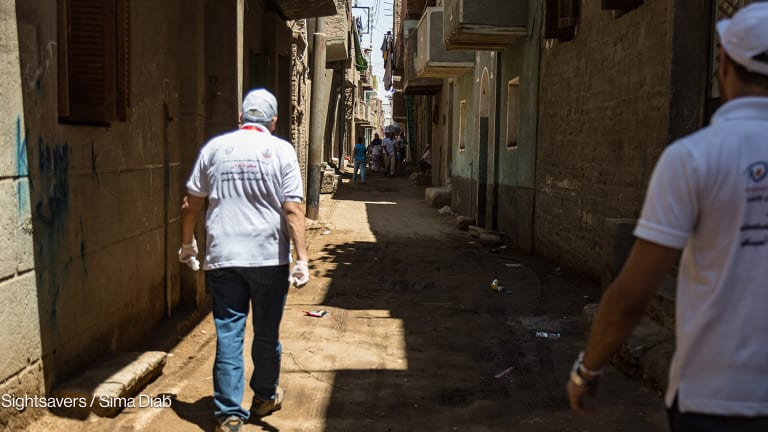
Ethiopia is one of a handful of countries that suffer most of the global burden of trachoma, a severe eye infection that causes blindness if not treated immediately.
But local health officials now know exactly where they should plan trachoma elimination programs, thanks to a new disease-mapping technology against this eyelid inflammation classified as a Neglected Tropical Disease by the World Health Organization despite its prevalence in Ethiopia, where 85 percent of the population is at risk.
Freya Paleit, communications officer for British NGO SightSavers, told Devex that the Global Trachoma Mapping Project collects data through an application for Android smartphones and then writes the information onto the SD card before sending it to the field office as soon as the device has network or WiFi access.
The mapping is conducted by a consortium of the International Trachoma Initiative, NGOs and academic institutions led by Sightsavers and funded among other sources by the U.K. Department for International Development.
More than 30 million people in the Ethiopian regions of Oromia and Tigray are expected to benefit from the GTMP, according to its developers the largest disease-mapping project ever attempted and soon to be tested in other countries in the next two years.
Connectivity challenges
The data collected by over 30 survey teams and available online allows local health officials to identify exactly where most people are at risk to launch interventions.
Paleit explained that not only innovative in its use of smartphones but also international standardisation, “with grader trainers being trained either in another highly trachoma-endemic country or in their own country by an international master grader.”
Challenges — especially in such a difficult country to work in as Ethiopia — however remain.
“Access to mobile networks and electricity has been difficult in some rural areas, but our Android-based data collection system can comfortably store several weeks of data before transmitting it if necessary, and we provide teams with car chargers, spare batteries and solar chargers as necessary,” said Paleit, who also underscored the importance ensuring that the graders are qualified to conduct the surveys.
Trachoma is still endemic in 53 countries and affects more than 21 million people all over the world, especially in Ethiopia and Sudan, but WHO estimates show that an additional 180 million people live in areas where the disease is highly prevalent and are therefore at high risk of going blind.
Read our last #innov8aid.




